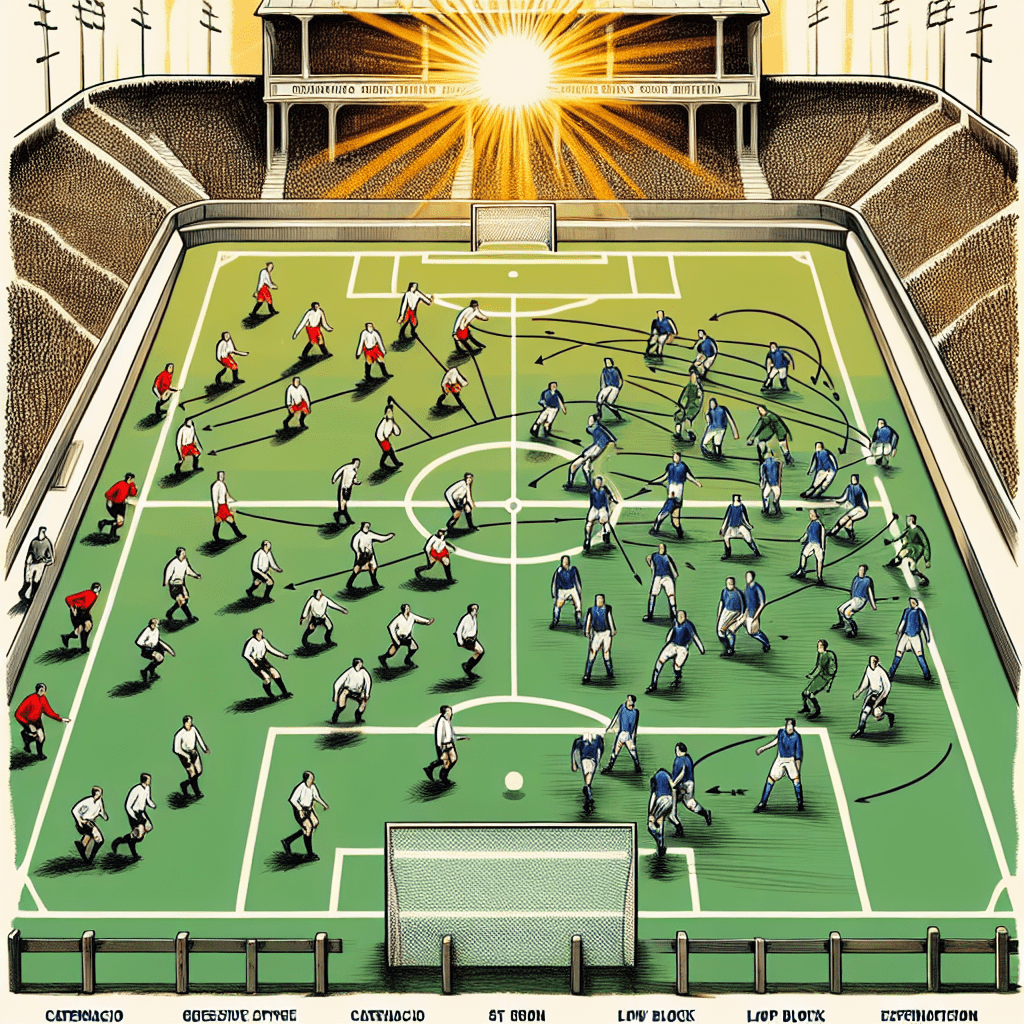[ad_1]
The Evolution of Defensive Strategies in Soccer: From Catenaccio to the Low Block
Soccer, or football as it is known outside North America, is a game that has continuously evolved over the years. This evolution can be seen in various aspects of the game, from the rules and equipment to the tactics and strategies employed by teams. One of the most intriguing aspects of this evolution is the development of defensive strategies. From the Italian Catenaccio to the modern Low Block, understanding these defensive approaches not only provides insights into the game’s tactical history but also into how soccer mirrors changes in contemporary sporting philosophy.
Catenaccio, which translates to “door-bolt” in Italian, epitomizes the defensive strategy that originated in Italy during the late 1950s and 1960s. The system prioritized defense over attack, aiming to nullify the opponents’ offensive threats through a highly organized and disciplined defensive setup. The hallmark of Catenaccio was the use of a libero, or sweeper, who played behind the line of defense. This player’s role was to clear the ball if it breached the defensive line and to orchestrate the defense with their positioning and insight. Teams like Inter Milan, under the management of Helenio Herrera, became the standard-bearers of this approach, achieving considerable success domestically and in European competitions.
However, soccer is a dynamic game, and strategies continually evolve in response to changes in rules, physical conditioning, and tactical innovations by coaches. Over time, the rigid structure of Catenaccio made way for more flexible defensive systems. The emphasis shifted from preventing goals at all costs to balancing defense with the ability to transition quickly to attack when the ball was regained. This evolution in strategy saw the development of zonal defending and pressing, where defending in zones allowed teams to cover space more efficiently, and pressing the opposition high up the pitch aimed to recover the ball quickly and launch counter-attacks.
The Total Football strategy developed by Dutch teams in the 1970s, most famously by Ajax and the Netherlands national team, was somewhat antithetical to Catenaccio. Total Football emphasized fluidity, with players interchanging positions and taking over defensive and offensive duties as required. However, it was the principles of pressing and spatial coverage inherent in Total Football that informed subsequent defensive strategies, rather than its all-out attacking ethos.
By the late 20th and early 21st centuries, soccer saw the development and popularization of the Low Block. A Low Block strategy involves a team dropping deep into their half, compacting the space in which the opposition can play. This system prioritizes maintaining a solid defensive shape, minimizing the spaces between players to reduce the opposition’s ability to create goal-scoring opportunities. Unlike Catenaccio, which relied on a specific player to mop up defensive breaches, the Low Block is a more collective defensive effort, with emphasis on teamwork and positional discipline. Teams like Atletico Madrid under Diego Simeone have shown the effectiveness of the Low Block, combining it with lethal counter-attacks to achieve success against teams that might dominate possession but find it hard to penetrate the organized defensive setup.
This evolution from Catenaccio to the Low Block reflects broader changes in soccer. The game has become faster, players more athletic, and the tactics employed more sophisticated. Coaches like Pep Guardiola and Jürgen Klopp have emphasized control of the game through possession and high pressing, respectively, which in turn has required adaptations in defensive strategies to counter these methods of dominating a match.
FAQs:
1. **What was the main objective of the Catenaccio strategy?**
– The main objective was to prioritize defense over attack, aiming to neutralize the opponent’s offensive threats with a highly organized and disciplined setup.
2. **How does the Low Block differ from Catenaccio?**
– While both prioritize defense, the Low Block is a more collective approach that doesn’t rely on a sweeper behind the defense. It involves the whole team maintaining a compact shape to limit space for the opposition.
3. **Who was a famous proponent of the Total Football strategy?**
– Dutch teams like Ajax and the Netherlands national team in the 1970s, under coaches like Rinus Michels, were famous proponents of Total Football.
4. **Why did defensive strategies evolve from Catenaccio to more dynamic systems?**
– Changes in the game’s rules, increased physical conditioning of players, and tactical innovations required more flexible and dynamic systems to balance defense with the capability to transition quickly to attack.
5. **Can a team employing a Low Block still be effective in attack?**
– Yes, the key to effectively using a Low Block is being disciplined defensively while being efficient and quick in transition to take advantage of counter-attacking opportunities.
In conclusion, the evolution of defensive strategies in soccer from Catenaccio to the Low Block outlines not only the tactical changes within the game but also reflects soccer’s adaptability and responsiveness to broader trends. This evolution, steeped in the rich history of the sport, continues to define teams’ approaches and will undoubtedly remain a crucial aspect of soccer’s ongoing development.
[ad_2]






